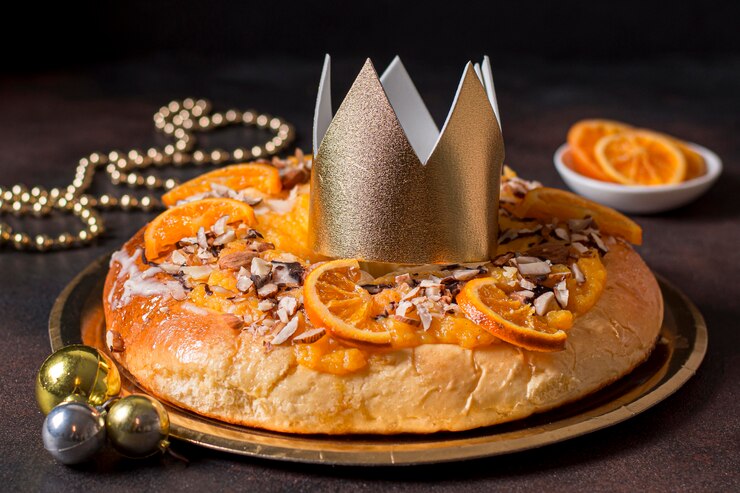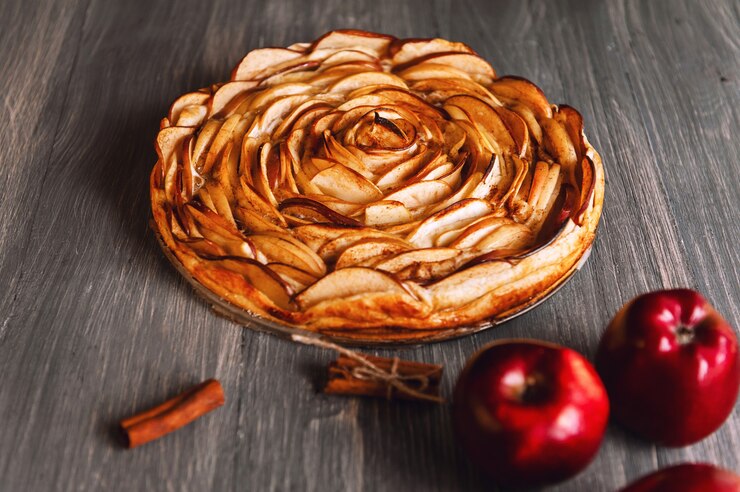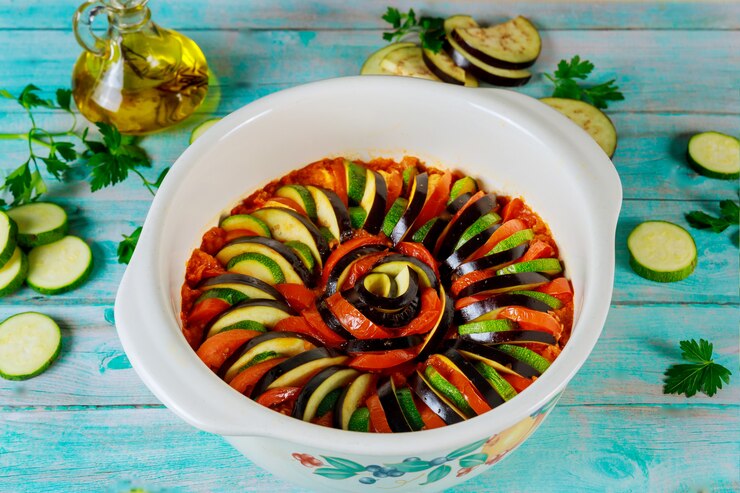Table of Contents
Introduction
French cuisine is one great masterpiece, celebrated around the world for its refinement, its historicism, and its seductive flavors. Whether you are a foodie or a home chef who wants to impress your friends and family, learning what’s behind the scenes of some classic French festival recipes will be like discovering a culinary treasure chest. In this paper, we deep dive into authentic recipes, techniques, and stories behind each dish, which will make you feel right at home in the heart of French tradition.
__________________________________________
French Cuisines and Festivals: A Magical Mix
French festivals are steeped in tradition, cheer, and delectable food. From Bastille Day to Epiphany, the moments in between are marked with dishes that unite people together. There is something particular to bread, freshly baked, or richness of pâté in all its creamy texture. French cuisine embraces balance, harmony, and attention to detail-qualities that have made it one of the world’s most beloved culinary traditions.

Galette des Rois – King’s Cake Epiphany Delight
Galette des Rois is the name of a classic French pastry that is shared on January 6, the date of Epiphany. This pastry consists of golden puff pastry with rich, almond-flavored filling-frangipane-inside. But the fun comes in with the hidden fève (a tiny charm or bean), whoever gets this, “king” or “queen” will be for the day!
Ingredients:
- 2 puff pastry sheets
- 100g almond flour
- 100g softened butter
- 100g sugar
- 2 eggs + 1 egg yolk for glazing
- 1 tbsp rum optional
- 1 fève small charm or bean
Instructions:
- Prepare Frangipane Filling: Beat together in a bowl almond flour with butter and sugar until smooth. Add eggs one at a time. If using, add rum.
- Assemble the Galette: Roll out the puff pastry and cut out two circles. On one of these, spread frangipane, saving a small border. Place the fève in the filling.
- Top and Seal: Lay the second pastry circle over the filled one and seal by pressing along the edges. Cover with egg yolk on top for its golden sheen.
- Bake: Preheat oven to 200°C/390°F and bake for 20-25 minutes or until golden brown. Serve warm, but beware not to break the hidden fève!
My Tip:
I love serving this pastry with a strong cup of coffee. It is so much fun having friends and family around, all eager to get the fève!

Crêpes Suzette – Carnival Classic
Crêpes Suzette is the pinnacle of any French Carnival celebration: a thin, lacy pancake served with a rich, buttery orange sauce flambéed with Grand Marnier or Cointreau.
Ingredients:
- 250g flour
- 3 eggs
- 500ml milk
- Pinch of salt
- 2 tbsp melted butter
For the Sauce:
- 100g butter
- 100g sugar
- Juice and zest of 2 oranges
- 50ml Grand Marnier or Cointreau
Instructions
- Crêpes Batter: In a large bowl, whisk together flour and salt. Gradually add the eggs and milk until you reach a smooth mixture; stir in the melted butter. The batter should rest for 30 minutes.
- Cooking the Crêpes: Heat a non-stick pan over medium heat and lightly grease it. With a ladle, fill in some of the batter, swirling to coat the bottom of the pan. Cook until the edges begin to curl and the surface is dry, about 1-2 minutes on each side. Repeat with the remaining batter.
- To Make the Sauce: Melt butter and sugar in a pan. Pour in the orange juice, the grated zest, and Grand Marnier. Let it simmer and reduce it a bit.
- Flambé – Optional: Light the sauce, standing back for a great finale, and then add the crêpes one at a time, folding them in quarters.
Personal Experience:
The first time I served Crêpes Suzette to a small family gathering, the moment of flambé turned out to be the piece de résistance for that evening-gasp from all!

Bouillabaisse – Pêcheur’s Feast – Marseille
Originating in Marseille, the bouillabaisse is a seafood stew that represents one of the symbols of feasts along the French coast. It joins several types of fish, mollusks, and aromatic herbs in a dish so comforting that it cannot miss festival feasts.
Ingredients:
- 1kg assorted fish (red mullet, sea bass, etc.)
- 500g mussels
- 200g shrimp
- 1 onion, chopped
- 2 tomatoes, chopped
- 3 garlic cloves, minced
- 2 litres fish stock
- 1 tsp saffron threads
- 1 orange peel
- 2 tbsp olive oil
- Salt, pepper, and herbs (thyme, bay leaf)
Instructions:
- Sauté Onions and Base: In a large pot, sauté olive oil with onions, garlic, and tomatoes. Add saffron, orange peel, and herbs to it.
- Add Stock: Add the fish stock. Let it boil and then reduce the heat and let it simmer.
- Cook Seafood: First add the fish and shrimp, then add the mussels. Let cook until the fish is tender and the mussels are opening.
- Serve: Traditionally, you’d serve this course with a dollop of rouille-a garlicky mayonnaise-on the side and a slice or two of crusty bread.
Relatable Insight:
Bouillabaisse reminds me of summer evening strolls in Marseille. The smell of food fills the air as every spoonful of this dish takes you right into the French coastline!

Tarte Tatin – A Sweet Apple Tradition
This upside-down caramelized apple tart is perfect for festivals like the Autumn Harvest or for family gatherings. What’s the secret? Allowing the apples enough time to caramelize in sugar and butter before baking.
Ingredients:
- 6-8 firm apples, preferably Granny Smith or Honeycrisp
- 150g sugar
- 100g butter
- 1 puff pastry
Instructions:
- Caramelize the Apples: Preheat oven to 190°C. In an oven-safe skillet, melt the sugar and butter over medium heat, until golden. Arrange apples, snug, cut side up.
- Top with Pastry: Place the puff pastry over the apples, tucking the edges around them.
- Bake: Place the skillet into the oven and bake for about 30 minutes, or until the pastry is golden brown.
- Flip and Serve: Let cool for a bit before flipping it onto a plate carefully.
Story:
The first time I made Tarte Tatin, flipping became quick-apples went flying everywhere! Now I treat it with kid gloves, and a bite with every mouthful seems sweet victory.

Ratatouille – Summer’s Vegetable Symphony
A well-acclaimed peasant dish in Provence, Ratatouille is a simmering mixture of eggplant, zucchini, bell peppers, tomatoes, and fresh herbs. It may be served warm or cold and is served with crusty bread or rice.
Ingredients:
- 1 eggplant, diced
- 2 courgettes, diced
- 1 bell pepper, diced
- 4 tomatoes, chopped
- 1 onion, chopped
- 2 garlic cloves, minced
- Fresh basil, thyme, salt, and pepper
- Olive oil
Instructions:
- Prepare the Vegetables: Heat olive oil in a large skillet. Sauté the onions and garlic until fragrant. Add the eggplant and cook until it begins to soften.
- Add Remaining Veggies: Add the courgettes, bell peppers, and tomatoes. Season with salt, pepper, basil, and thyme.
- Simmer: Allow the vegetables all to become tender by simmering the mixture on low heat.
Personal Note:
Ratatouille brings back images of a simpler time in my grandmother’s kitchen. Always, always use the freshest ingredients-no cuts!

Bûche de Noël (Yule Log) – A Christmas Delight
Bûche de Noël, or Yule Log, is one of the most beloved French Christmas desserts, shaped like a log. Made from a sponge cake rolled with a decadent filling, usually chocolate buttercream, it is often decorated to look much like an actual log.
Ingredients:
- For the Sponge Cake:
- 4 eggs
- 100g sugar
- 100g flour
- 1 tsp vanilla extract
- For the Buttercream Filling:
- 200g butter, softened
- 200g icing sugar
- 100g dark chocolate, melted and cooled
- For Decoration:
- Icing sugar (for dusting)
- Chocolate shavings, berries, or edible decorations (optional)
Instructions:
- Prepare the Sponge Cake: Preheat oven to 180°C (350°F). Line a baking tray with parchment paper. Beat eggs and sugar until pale and fluffy. Fold in the flour gently. Spread the batter evenly on the tray and bake for 8-10 minutes.
- Roll the Cake: Place the still-warm cake on a clean kitchen towel dusted with icing sugar. Gently roll it up with the towel and let it cool completely.
- For the buttercream: beat the butter and icing sugar until light and fluffy. Mix in the melted chocolate.
- To assemble the Bûche: unroll the cooled sponge and spread with a layer of buttercream. Roll it up again, trimming the edges if needed.
- Decorate: Smear the remaining buttercream on the roll. Use a fork to give a wood-like texture and sprinkle icing sugar to create a snowy effect.
Personal Note:
The first Bûche de Noël that I made was somewhat eccentric in shape, but its taste has remained unforgettable! Decorating it with edible ornaments gives it a festive appeal that every one loves.

Cassoulet – The Comfort of Southern France
Cassoulet is a warm, white bean stew with a hearty recipe of sausages, duck or pork, and sometimes other meats that are slow-cooked to perfection. Originating in the Languedoc region, it’s a staple of French winter festivals and celebrations.
Ingredients:
- 500g dried white beans
- 2 duck legs (or duck confit)
- 4 sausages (Toulouse sausages if available)
- 300g pork belly, diced
- 1 onion, chopped
- 4 garlic cloves, minced
- 2 tomatoes, chopped
- 1 bouquet garni (thyme, bay leaf, parsley tied together)
- Salt and pepper
Instructions:
- Soaking Beans: Let the beans soak overnight, then drain.
- Cooking Meats: Place the duck legs, sausages, and pork belly in a large pot, and brown them. Then, set aside.
- Base Preparation: In the same pot, sauté the onions and garlic until fragrant. Add tomatoes, beans, and bouquet garni, and add enough water to cover. Simmer for 1 hour.
4. Assemble and Bake: Add the meats to the pot and mix. Transfer to a baking dish and bake at 150°C for 2-3 hours, occasionally pressing down to create a crusty top layer.
Relatable Insight:
Cassoulet reminds me of long, cosy nights with family. It’s a slow-cooked dish that’s worth every hour spent waiting and tastes like love and tradition in every bite.

Quiche Lorraine – A Savoury Festival Treat
Originating from Lorraine in northeastern France, Quiche Lorraine is a savory tart filled with cream, eggs, and bacon. It’s perfect for any festival gathering or simply as a comforting dish.
Ingredients:
- For the Pastry:
- 200g plain flour
- 100g cold butter, cubed
- Pinch of salt
- 2-3 tbsp cold water
- For the Filling:
- 200g bacon lardons
- 3 eggs
- 200ml double cream
- 100ml milk
- Salt, pepper, and nutmeg
Instructions:
- Make the Pastry: In a bowl, rub the butter into the flour along with a pinch of salt. Gradually add cold water to form a dough. Roll out and place in a tart tin. Chill for 20 minutes.
- Pre-bake the Crust: Preheat oven to 180°C/350°F. Blind bake using baking weights for 10 minutes.
- Make the filling: Cook the bacon until crispy, then whisk the eggs, cream, milk, salt, pepper, and nutmeg in a bowl.
- To assemble the Quiche: Fill the crust with the cooked bacon and pour the egg mixture over it. Bake for 25-30 minutes.
Story:
Quiche Lorraine is just one of those all-around hits in my home. It’s never a flop at any sort of gathering; it’s always clean – nothing goes back into the fridge!

Madeleines – Soft Shell-Shaped Treats
Madeleines are small, shell-shaped cakes that have a buttery and lemony flavor. They are ideal to be served during festive fun gatherings, teas, or even as light desserts.
Ingredients:
- 100g flour
- 100g sugar
- 100g butter, melted and cooled
- 2 eggs
- Zest of 1 lemon
- 1 tsp baking powder
Instructions:
- Mix the Batter: Preheat oven to 190°C (375°F). Beat the eggs and sugar until light and fluffy. Add the lemon zest and sift in the flour and baking powder. Fold in the melted butter.
2. Chill and Bake: Let the batter rest for at least an hour. Fill in greased madeleine moulds. Bake for 8-10 minutes or until golden.
Personal Tip:
I always make extra madeleines because they disappear in no time! The slight crispiness on the outside, combined with the fluffy center, is absolute magic.

Coq au Vin – A Delight Imbued with Wine
Coq au Vin, a French phrase meaning “rooster in wine,” is a classic French festival dish of chicken braised with wine, mushrooms, onions, and lardons.
Ingredients:
- 1 whole chicken, cut into pieces
- 200g bacon lardons
- 300g mushrooms, sliced
- 2 garlic cloves, minced
- 1 bottle red wine (preferably Burgundy)
- 1 onion, chopped
- 2 tbsp flour
- 2 tbsp butter
- Herbs (thyme, bay leaf)
Instructions:
- Marinate the Chicken: Marinate the chicken pieces in wine, herbs, and onions overnight.
- Cook the Lardons and Chicken: Sauté the lardons, then remove and set aside. Brown the chicken in the same pan. Sprinkle with flour.
- Simmer: Add wine, garlic, mushrooms, lardons, and herbs. Simmer gently for 1-2 hours.
- Serve: Serve hot with crusty bread or potatoes.
Personal Note:
The rich aroma of Coq au Vin fills the kitchen with warmth. It’s a dish that requires patience but rewards you with unforgettable flavours.
Conclusion
French festive foods are a true celebration of heritage, flavors, and artistry. From sweet treats such as Bûche de Noël and Galette des Rois to savory treats like Coq au Vin and Cassoulet, each recipe has its story to tell, connecting you with hundreds of years of tradition. Recipes brought into your kitchen will let you feel the warmth, passion, and community that truly defines the culture of French cuisine. Master these recipes, and you will transport a wee bit of the magic of France right into your home. Enjoy every moment, every story that unfolds with each dish.
You will be cooking in bliss, and it will be deliciously bon appétit!
Frequently Asked Questions
- What is so special about French festival cuisine?
French cuisine is special because of its emphasis on balance, tradition, and high-quality ingredients that make every dish unique and historic in flavor.
- Can I make these recipes ahead of time?
Many dishes, such as Bouillabaisse and Ratatouille, are even better the next day when flavors have had a chance to meld.
- Where do I find authentic French ingredients?
Look for speciality stores or markets that carry imported French products.
- What is the purpose of the flambéing in Crêpes Suzette?
It enhances flavor and aroma while it provides a spectacular presentation.
- Is it difficult to make a Galette des Rois?
Not at all! It’s just a humble pastry with a sumptuous filling, but the thrill of the hunt when you finally find the fève adds a little magic to it.
- What wine goes well with Bouillabaisse?
A chilled white wine, preferably a Provençal rosé, accompanies this perfectly.
- Do I need any special equipment to make Tarte Tatin?
It would be perfect if you have an ovenproof skillet; it caramelises the apples and bakes them in one.
- Is it possible to adapt Ratatouille?
Absolutely, go ahead! You can add your favorite herbs or substitute the vegetables.
- Are French festival dishes very time-consuming?
Some are, but they are well worth the effort. Many can be made in stages.
- What’s the best way to serve these dishes?
With love, attention to presentation, and a hearty appetite.
- How do I ensure my puff pastry rises properly for the Galette des Rois?
Chill the dough before baking and bake it in a hot oven for an even rise.
- Is flambéing necessary for Crêpes Suzette?
Optional, but adds depth of flavor and looks amazing, too.
- Can I make Cassoulet vegetarian?
Yes, just substitute the meat with smoked tofu or mushrooms for a rich, plant-based version.
- What’s the secret to the perfect Bûche de Noël?
Rolling the sponge when warm keeps it from splitting and allows it to retain its shape.
- Why chill the Madeleine batter?
Chilling forms the signature hump on madeleines by shocking the batter in a very hot oven.
- What wine does Coq au Vin pair well with?
Traditionally, a Burgundy wine, but any dry red works well.
- Is Ratatouille served hot or cold?
Both! It’s wonderful hot as a main course or cold as a refreshing side.
- Can Quiche Lorraine be made ahead of time?
Yes, it can be made up to a day in advance and refrigerated and reheated.
- Why is orange peel added to Bouillabaisse?
It gives it more aroma and a slight citrus flavor.
- Do all the French festive dishes take long to bake?
Not really; a few of them, like Crêpes and Madeleines, do not take long to bake. However, some festive French dishes, like Cassoulet, will take time but are really worth trying!
Try these traditional French recipes for yourself and have fun with this festive baking!
Bon appétit!




